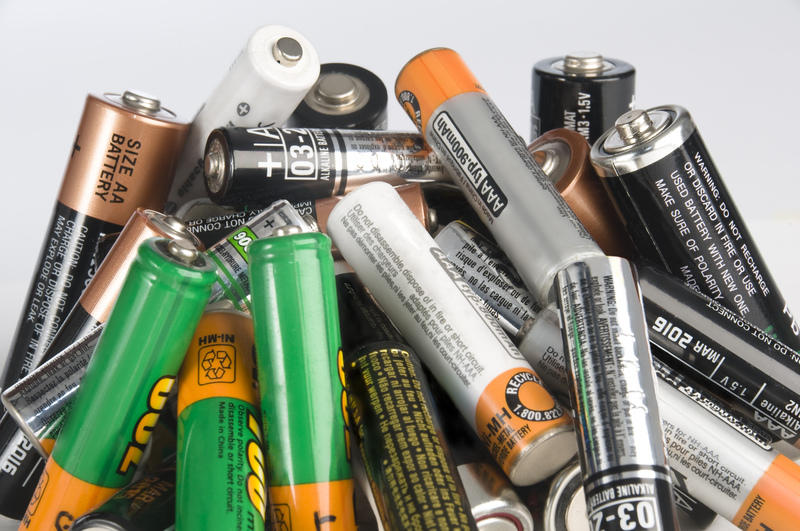Best Ways to Contain and Discard PPE Waste During a Pandemic
The proper management of PPE waste has become a critical necessity in the wake of global pandemics, most notably COVID-19. With billions of personal protective equipment (PPE) items such as masks, gloves, and face shields used daily, it is paramount to understand the best practices for containing and discarding PPE waste to safeguard public health and protect the environment. In this comprehensive guide, we explore the top methods of effective PPE waste disposal, share practical tips, and discuss sustainable solutions for minimizing pollution from PPE during a pandemic.

Understanding PPE Waste: Types and Risks
Before delving into waste containment and disposal strategies, it's essential to identify the different types of PPE waste and recognize the risks associated with improper handling.
Common Types of PPE
- Face masks and respirators (N95, surgical, cloth)
- Gloves (latex, nitrile, vinyl)
- Face shields and goggles
- Disposable gowns and aprons
- Shoe and head covers
Risks of Poor PPE Waste Management
- Potential spread of infectious diseases due to contaminated PPE
- Environmental hazards from plastic pollution
- Clogged sewage and harm to wildlife
- Occupational hazards to waste handlers
- Contribution to the global waste crisis
The urgency to adopt safe and sustainable PPE waste disposal methods cannot be overstated during a pandemic.
Best Practices for Containing PPE Waste
Effective containment is the first line of defense in minimizing exposure to potentially contaminated PPE waste materials. Proper segregation and containment significantly reduce environmental and health risks.
1. Segregate PPE Waste from Regular Trash
- Always separate PPE items from general household or office waste.
- Use clearly labeled, dedicated PPE waste bins for masks, gloves, and other used items.
- Choose bins with secure lids to prevent accidental contact.
2. Utilize Double-Bagging Technique
- Place used PPE in a sturdy, leak-proof bag, & then place the bag inside another clean bag.
- This method minimizes the risk of tears, leaks, and cross-contamination.
3. Designate Special PPE Disposal Areas
- Establish dedicated collection points in hospitals, businesses, and high-traffic public areas.
- Display clear signage to guide users on the correct disposal of PPE.
- Regularly disinfect disposal areas to prevent accumulation of pathogens.
4. Ensure Proper Storage Before Collection
- Keep full PPE waste bags in a secure, well-ventilated area.
- Avoid direct sunlight or humidity to reduce microbial growth.
- Use color-coded bags (e.g., red or yellow) to signal hazardous waste.
5. Personal Hygiene and Precautions for Waste Handlers
- Waste collectors should wear suitable protective gear including gloves and masks.
- Emphasize frequent hand washing after handling PPE waste.
- Encourage the use of disposable aprons and face shields for added protection.
Best Ways to Discard PPE Waste During a Pandemic
Once contained, the next step is to discard PPE waste safely to prevent disease transmission and minimize environmental harm. These methods are considered the gold standard for managing PPE waste during health crises.
1. Follow Local PPE Waste Disposal Guidelines
- Check with authorities for specific PPE waste protocols in your city or region.
- Some municipalities now offer designated hazardous waste collection points or curbside pickups.
2. Controlled Incineration
- Incineration at licensed medical waste facilities is a preferred method for contaminated PPE.
- This completely destroys pathogens and reduces the risk of re-contaminating the environment.
- Ensure compliance with air pollution controls to avoid releasing toxins.
3. Autoclaving
- High-pressure steam sterilization (autoclaving) is effective in deactivating viruses and bacteria present on PPE.
- After autoclaving, waste can be safely landfilled or recycled where possible.
4. Deep Burial in Sanitary Landfills
- Non-recyclable PPE, if free from infectious agents, may be disposed of in engineered sanitary landfills.
- Properly contained PPE waste reduces the chances of leachate and surface pollution.
5. Advanced Sterilization and Shredding
- Emerging technologies allow the shredding and sterilization of PPE waste to further minimize exposure.
- This method can also reduce waste volume and make safe disposal feasible.
Sustainable Solutions: Eco-Friendly PPE Waste Management
The surge in single-use PPE during pandemics poses a significant challenge for environmental sustainability. Incorporating green strategies and recyclable options remains crucial for both present and future health crises.
1. Encourage the Use of Reusable PPE
- Where appropriate, opt for washable cloth masks and gowns.
- Ensure these are sanitized at high temperatures after each use.
2. Invest in Biodegradable PPE Products
- Seek suppliers who offer PPE items made from biodegradable materials such as cornstarch, bamboo fiber, or PLA.
- Such materials reduce the long-term environmental footprint of PPE disposal.
3. Innovation in PPE Recycling Programs
- Support initiatives and companies that convert PPE waste into fuel, construction materials, or textiles.
- Proper segregation at the source is necessary to facilitate recycling.
4. Public Awareness Campaigns
- Educate communities about correct PPE waste containment and discard methods through online and offline campaigns.
- Promote responsible behavior in public spaces.
5. Develop Clear Signage and Instructions
- Use multilingual, visual instructions at PPE disposal points to enhance compliance.
- Highlight the dangers of improper PPE waste disposal to discourage littering.
Special Considerations: Medical Facilities vs. Household Settings
The best ways to contain and discard PPE waste may differ between hospitals and households. Below are key distinctions to ensure optimal practices in both environments.
In Healthcare and High-Risk Facilities
- Strictly follow OSHA and CDC guidelines for biomedical waste disposal.
- Use approved biohazard bins, marked with the biohazard symbol.
- Train staff on safe PPE doffing and waste handling procedures.
- Arrange for daily pickup by certified medical waste companies.
In Households and Community Settings
- Do not place used PPE in recycling bins as this contaminates recyclable materials.
- Dispose PPE in a separate trash bag and tie securely before putting in general waste.
- Wash hands immediately after handling used PPE.
- Check for any local community disposal programs accepting PPE waste.
The Role of Government and Industry in PPE Waste Management
During pandemics, government agencies and industries play a pivotal role in the safe disposal of PPE. Some measures include:
- Enforcing regulations and penalties for illegal PPE disposal.
- Providing PPE waste bins in public transport hubs, airports, and offices.
- Developing national guidelines for public and private sectors.
- Funding research into sustainable PPE and advanced waste treatment technologies.

Potential Consequences of Improper PPE Waste Disposal
The improper disposal of PPE waste during a pandemic can lead to dire consequences, including:
- Heightened risk of community transmission of infectious pathogens.
- Environmental degradation from plastic pollution.
- Clogged sewage systems and urban flooding.
- Wildlife injuries due to entanglement or ingestion of PPE items.
- Public health threats to sanitation workers and the general population.
Conclusion: Prioritizing Safe and Responsible PPE Waste Handling
Containing and properly discarding PPE waste is a collective responsibility, essential for breaking the chain of infection and reducing environmental harm during pandemics. Adhering to best practices not only protects health workers, waste handlers, and the public but also supports the global fight against pollution and disease transmission.
By following the methods outlined above--ranging from segregation and double-bagging to incineration and innovative recycling--individuals, businesses, and governments can work together to ensure safe and sustainable PPE waste management. With heightened awareness and proactive measures, we can mitigate the risks associated with medical waste and cultivate a safer, healthier world during and beyond pandemics.